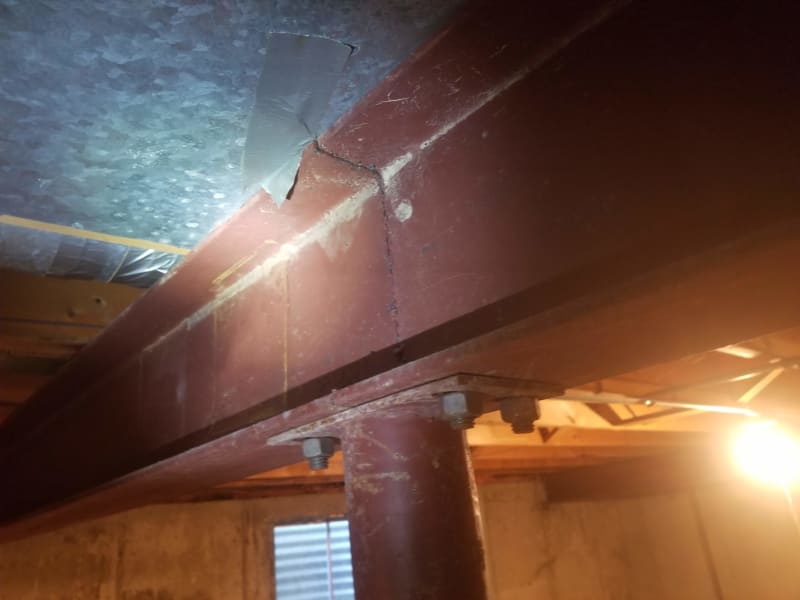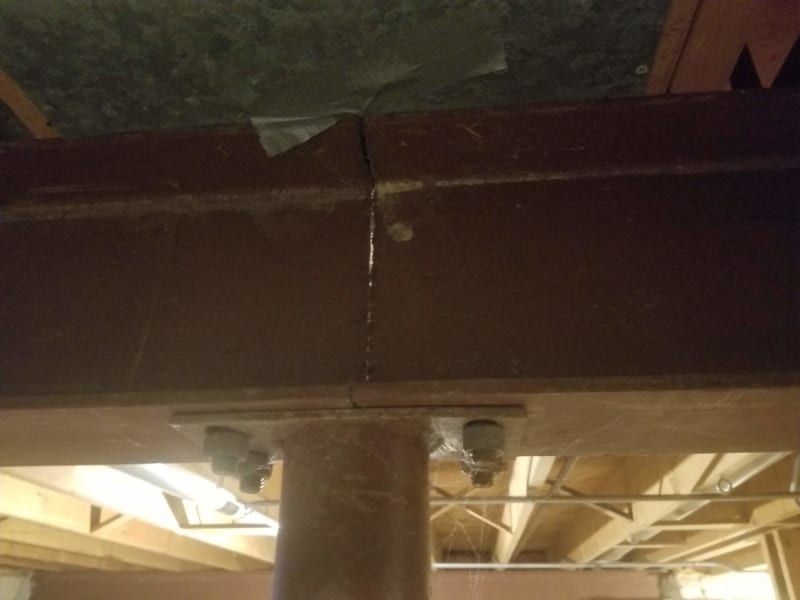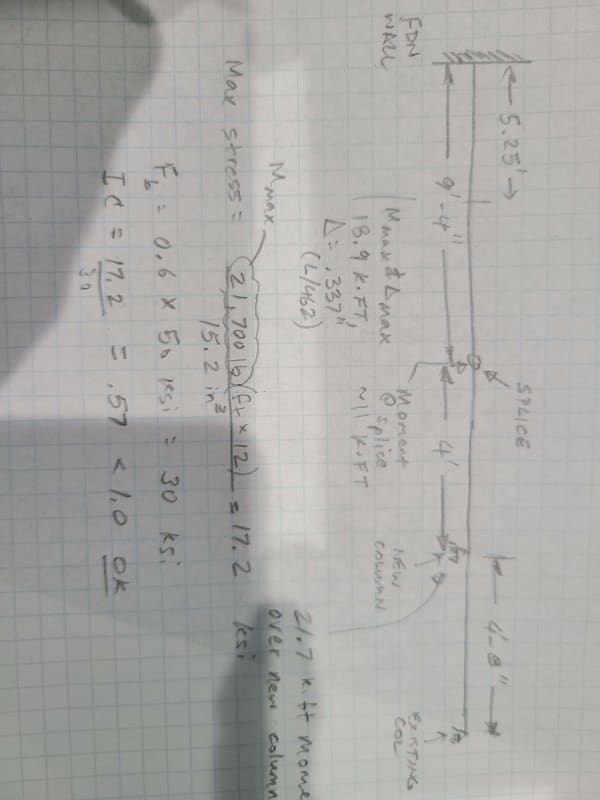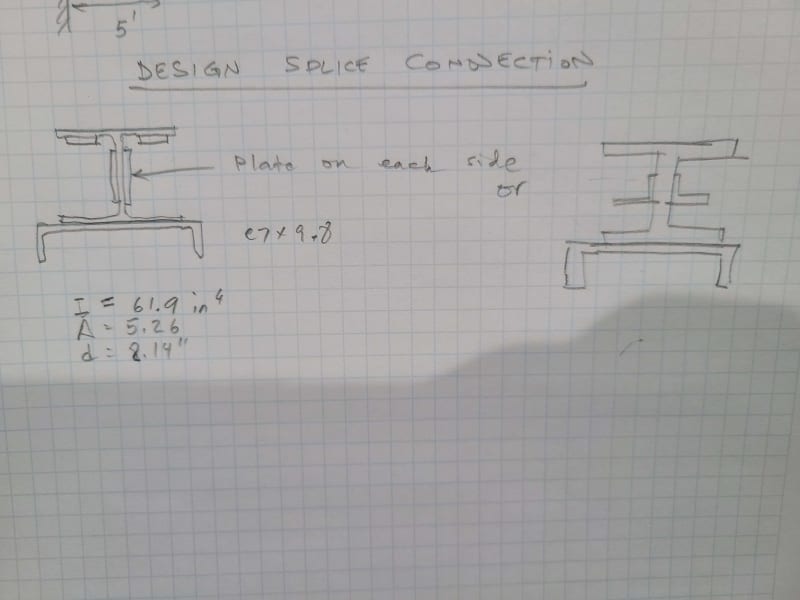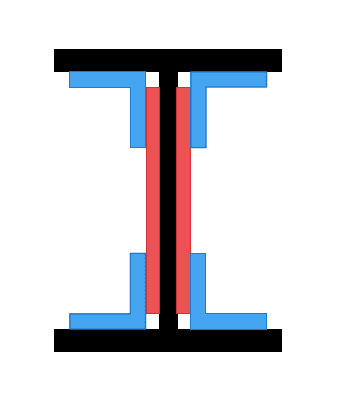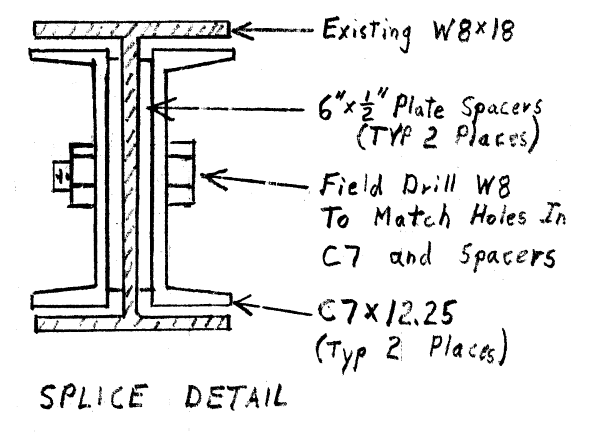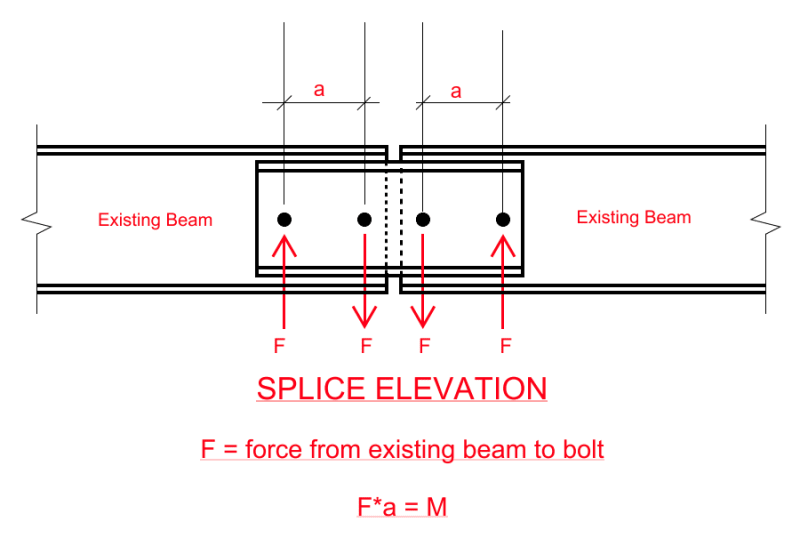mfstructural
Structural
I'm sure this has been addressed here before. I have a project where the homeowner wants to remove a column under two abutting steel beams. The span from the wall to the column is 9' and then another 4' away there is a stud wall. I want to move the column within the stud wall (provide a circular footing). That will have the beam adjacent to the wall spanning 9' to the splice and the other beam will be cantilevering 4' over the column and its end will attach at the splice.
I haven't run numbers but wanted to get an idea of how people have approached these projects in the past. I was thinking of welding a channel to the bottom of the beam and also steel plates on each side of web. Heat is an issue during welding with wood joists bearing on this.
I've included a picture.
I haven't run numbers but wanted to get an idea of how people have approached these projects in the past. I was thinking of welding a channel to the bottom of the beam and also steel plates on each side of web. Heat is an issue during welding with wood joists bearing on this.
I've included a picture.

![[idea] [idea] [idea]](/data/assets/smilies/idea.gif)
